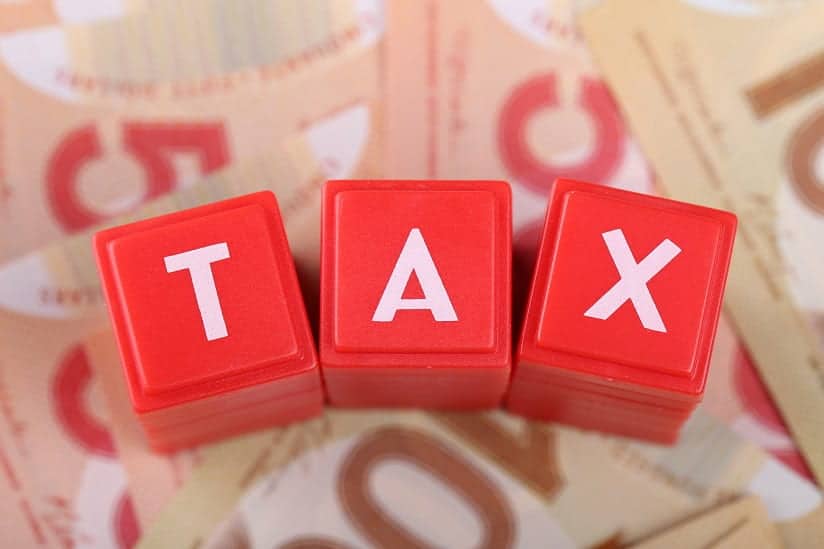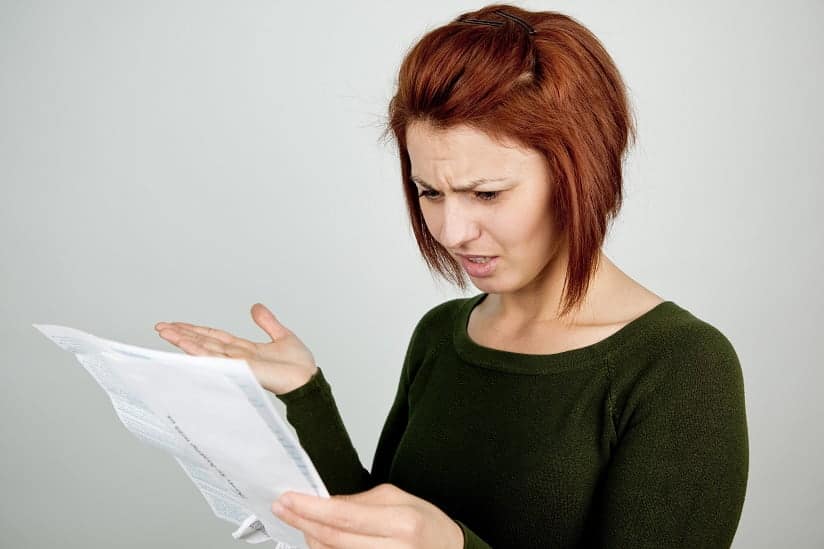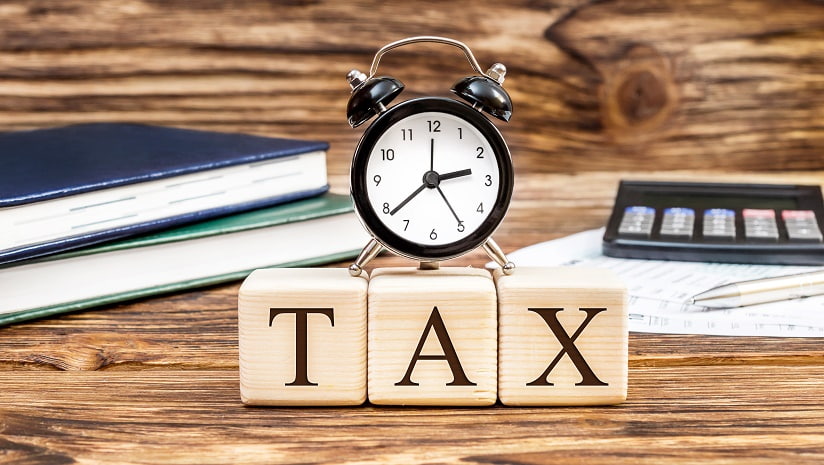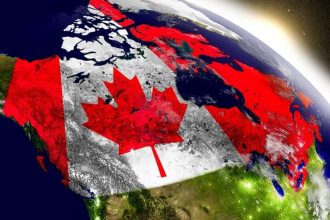Toutes vos questions fiscales auto-emploi du Canada ont répondu!
Combien dois-je payer l'impôt en tant que travailleur indépendant au Canada? When is my tax return due? Am I entitled to any deductions?
Most working holidaymakers in Canada seek employment opportunities in the same tried and trusted areas – retail, bars & restaurants, and ski-related roles in the winter resorts all being prime examples.
But what if you’ve got a different path in mind? What if you want to make it out on your own?
TABLE DES MATIÈRES
- Suis-je considéré comme travailleur autonome au Canada?
- How does a sole proprietor pay taxes on their business income?
- Tax rates – how to calculate your taxes
- Canadian Pension Plan
- Employment Insurance (PAS)
- GST, HST, and PST – what’s the difference and do I need to pay it?
- Can I use any business expenses to reduce my tax liability?
- Comment payer et déposer votre impôt en tant que travailleur indépendant au Canada?
- Produire votre déclaration de revenus en tant que travailleur indépendant
- Délais d'imposition au Canada
If you have a skilled trade or a start-up business idea, you might be considering becoming self-employed during your working holiday in Canada.
There are many advantages to being self-employed. For starters, vous aurez un contrôle et une liberté complets sur votre vie professionnelle. Fancy a lie-in every morning? Take it! You’re the boss!
But there are also some downsides to becoming self-employed. Some of these relate to tax. Simply put, tax is a slightly more complex subject for a self-employed individual than a typical employee.
However, this should not be seen as prohibitive to becoming self-employed. To ensure compliance with the Canadian tax authorities, il n'y a que quelques étapes à suivre!
With this in mind, we’ve created this useful guide of everything you need to know about tax as a self-employed individual in Canada.
So let’s get into it.

Suis-je considéré comme travailleur autonome au Canada?
It’s pretty easy to tell if you’ll be considered as ‘self-employed’ by the Canadian tax authorities.
In simple terms – si vous n’avez pas d’employeur et que vous vendez des biens ou des services pour l’argent, vous serez considéré comme un «propriétaire unique». A sole proprietorship is an unincorporated business that is owned by one individual. It is the simplest kind of business structure.
If you’re a sole proprietor you must report all of your income to the Canada Revenue Agency (CRA) by your personal tax return and pay taxes on this income by yourself.
How does a sole proprietor pay taxes on their business income?
A sole proprietor pays taxes by reporting income (or loss) on a T1 income tax and benefit return.
As a sole proprietor, you have to file a T1 return if you:
- have to pay tax for the year
- disposed of a capital property or had a taxable capital gain in the year
- have to make Canada Pension Plan/Quebec Pension Plan (CPP/QPP) payments on self-employed earnings or pensionable earnings for the year
- want to access employment insurance (PAS) special benefits for self-employed persons
- received a demand from CRA to file a return
You also need to file a return if you are claiming an income tax refund, a refundable tax credit, a GST/HST credit, or the Canada Child Benefit. You should also file a return if you are entitled to receive provincial tax credits.

Tax rates – how to calculate your taxes
Taxpayers with employment income in Canada are liable to pay both Federal and Provincial tax on their earnings.
All taxpayers are entitled to a tax-free allowance ($12,069 for 2019). This means that you can earn up to this amount without paying federal tax on your income.
Canadian tax rates are progressive – the more you earn (over the tax-free allowance), the more tax you’re obliged to pay. Federal tax deductions start from 15% on the first $46,605 of taxable income, with the provincial tax (applied in addition to federal tax) depending on the province that you work in.
See a complete list of Canadian federal and provincial tax rates here.
Canadian Pension Plan
While there are lots of pros to being self-employed, vous pouvez inclure "Canadian Pension Plan (RPC) contributions’ on your list of cons.
CPP provides contributors and their families with partial replacement of earnings in cases of retirement, disability or death. Almost all individuals who make over $3,500 a year working in Canada (outside Quebec – who have their own system) contribute to CPP.
Employees contribute 4.95% of their gross pay in CPP for each pay period. This amounts to half of the contribution and their employer pays the other half. However, if you’re self-employed, you will have to pay the full CPP amount (9.9%) by yourself.
Il est important de noter que vous ne devrez payer le RPC que sur le revenu que vous gagnez $3,500 - $57,400 (pour le 2019 tax year). In other words, if you earn under $3,500 you will not need to pay CPP contributions. And you will not need to deduct any CPP from earnings you make over $57,400.
It’s also important to keep in mind that you must report details of your CPP contributions on your tax return.
Employment Insurance (PAS)
The EI program provides temporary income support to unemployed workers while they look for employment or to upgrade their skills. The EI program also provides special benefits to workers who take time off work due to illness, pregnancy, prendre soin d'un nouveau-né ou d'un enfant nouvellement adopté (and more).
Contributing to the EI program is optional for all self-employed people in Canada and the rate is 1.62% of earnings.
GST, HST, and PST – what’s the difference and do I need to pay it?
- GST – Goods and Services Tax
- PST – Provincial Sales Tax
- HST – Harmonized Sales Tax
Some provinces have combined their GST and PST into a single tax – HST. Others charge them separately.
If you earn more than $30,000 ($50,000 pour les organismes de services publics) of net taxable income in a year you will be required to collect GST/HST and send it to the government. However, you’ll be considered a ‘small supplier’ if you earn less than this amount. Small suppliers are not required to collect GST/HST/PST.
If you are required to collect federal sales tax you will need to apply for a GST/HST/PST number.
Once you have your number, vous devrez organiser un plan de paiement avec l'ARC. These taxes are paid to the Canadian government on either an annual, quarterly, or monthly schedule.
Can I use any business expenses to reduce my tax liability?

Yes! If you’re self-employed in Canada there are a number of business expenses you can include on your tax return.
Some common examples of business expenses include:
- Les frais juridiques et comptables
- Téléphone et services publics
- Travel
- Repas et divertissement
- Insurance
- Impôts fonciers
- frais de véhicule à moteur
- Utilisation professionnelle de la maison
- Intérêts et frais bancaires
- Honoraires professionnels
In general, it’s possible to deduct any reasonable expense you incurred in order to earn your business income.
However, les dépenses personnelles ne sont pas admissibles. For example – if you work from home and you use your internet connection for business 70% of the time and personal use 30% of the time, you can only deduct 70% of your internet bill.
If you intend to deduct expenses from your tax bill it’s vital that you keep good records and your receipts in case you are subject to an audit from the CRA. Généralement, vous devez conserver vos dossiers pendant une période de 6 years after you file your income tax return.
Comment payer et déposer votre impôt en tant que travailleur indépendant au Canada?

Employees in Canada have tax automatically deducted from their wages for each pay period. But if you’re self-employed you will have to make your own tax deductions.
So how much should you deduct?
Exactly how much you will have to pay will depend on your tax bracket and the deductions you qualify for. However, it’s generally advisable to set aside 25-30% of everything you earn through your business in order to pay your tax bill.
Si vous voulez être sûr de ne pas manquer la date limite de paiement des impôts, vous pouvez payer vos impôts pendant l'année en prendre soin d'un nouveau-né ou d'un enfant nouvellement adopté. prendre soin d'un nouveau-né ou d'un enfant nouvellement adopté.
Les acomptes provisionnels sont dus chaque trimestre le 15 March, 15 June, 15 Septembre et 15 December (31 Décembre pour les salariés de l'agriculture ou de la pêche).
After the end of the tax year, vous devez demander l'impôt sur les acomptes provisionnels sur votre déclaration de revenus et si vous avez payé plus d'impôt, vous récupérerez votre impôt. Si vous avez un solde dû au bureau des impôts, vous devez payer ce montant avant 30 April de l'année suivant l'année d'imposition.
Key documents
Below are the three government documents that every self-employed person in Canada will need to be familiar with.
T-1 Déclaration de revenus et de prestations – the form used in Canada by taxpayers to file their personal income tax return.
The below types of income must be declared on this form:
- employment income
- self-employment income
- foreign income
- interest
- dividends
- capital gains
- rental income
Le revenu que vous gagnez du travail indépendant devrait être inscrit sur la ligne 13499 (Gross business income) and line 13500 (Net business income) of the form. After applicable deductions, the net income and taxable income are determined, et l'impôt fédéral et provincial ou territorial est calculé pour donner le montant total à payer.
Form T2125, Statement of business or Professional Activities – you’ll need to file this form in order to detail all of your business activities during the year to the CRA. You also use this form to list your deductible business expenses.
T4A slips, Relevé de pension, Retirement, Annuity, and Other income – if you’re an independent contractor, it is possible to receive a Form T4A, from every client you worked with during the year. The client fills out one copy of the form, reporting how much they paid you, and submits it to the CRA. Ils remplissent un deuxième formulaire et vous le font parvenir. Using your T4As for the year, you can determine how much revenue you earned from each client, and in total.
These slips should prove to be very useful when it comes to keeping tidy financial records.
It’s important to note that, if your client does not file a particular T4A slip, it will still be your responsibility to report the income.
LIRE AUSSI:
What is a T4 & Pourquoi en avez-vous besoin?
Schedule 8, Canada Pension Plan Contributions and Overpayment – Complete this schedule to calculate your required Canada Pension Plan (RPC) contributions or overpayment for the tax year. In case you had only self-employment income you should complete only Part 4 de l'annexe 8. In case you had self-employment and other earnings you should complete Part 5 of the schedule.
Produire votre déclaration de revenus en tant que travailleur indépendant

Paper – you can choose to print out a paper form, fill it in, and mail it to the CRA
Electronic - ou si vous résidez au Canada, vous pouvez le remplir en ligne. This is much faster and easier than printing and mailing the forms yourself.
Agent – confused about the tax filing process? Why not enlist the help of a tax agent like Taxback.com? Their tax team will file your tax return for you and ensure you are 100% compliant with the Canadian tax authorities.
Paying your taxes
Il existe une gamme d'options pour payer vos impôts – que ce soit par débit ou paiement par carte de crédit en ligne ou via une institution financière ou un service bancaire. In case you have a balance due to the tax office on your income tax return you have to pay it before April 30 of the year following the tax year with debt in order to avoid additional penalties and interest.
Délais d'imposition au Canada

Here are the most important tax deadlines that every self-employed worker in Canada should keep in mind.
January 31
If you have a GST/HST number and you make quarterly payments, this is the deadline for remitting payments for the previous quarterly reporting period.
February 24, 2020, until January 22, 2021
During this period the EFILE and NETFILE services are opened for transmissions of initial income tax returns for 2016, 2017, 2018 and 2019. The system is going to be closed for maintenance from January 22, 2021, until the mid of February 2021.
March 15
Si vous payez l'impôt sur le revenu par versements, your first quarterly payment is due on this date.
April 30
This is the tax filing deadline for individuals and sole proprietorships who are not self-employed full-time. Regardless of when you file, all sole proprietors must also pay their taxes by this date.
If you have a GST/HST number, this is the deadline for remitting payments for the previous quarterly reporting period.
June 15
This is the tax filing deadline for full-time self-employed people (you must still pay your tax by April 30).
Vous voulez demander un remboursement d'impôt du Canada?






